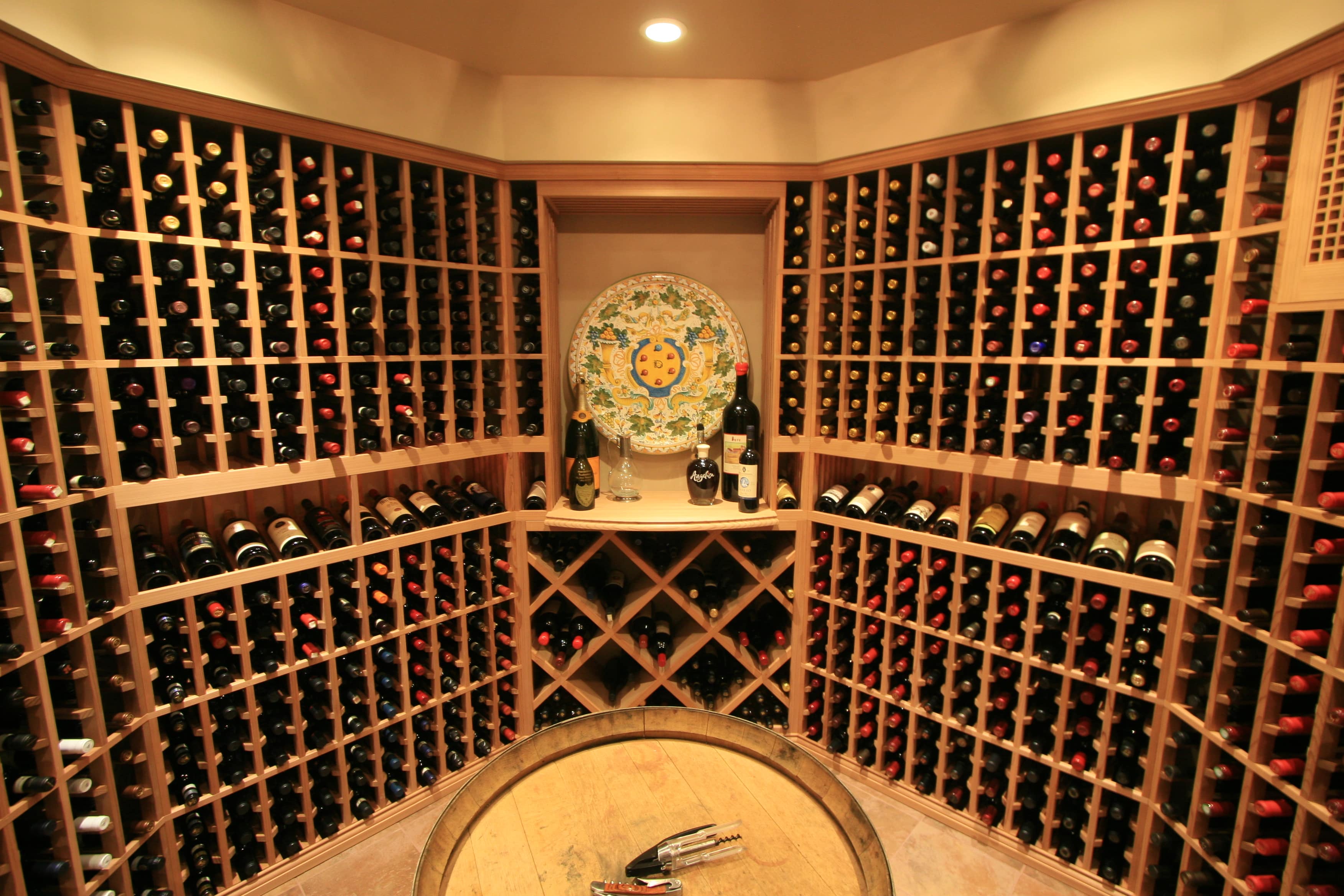More and more people find themselves becoming connoisseurs of good wine today. A lot of homes are undergoing remodeling for the addition of a wine cellar. These renovations are mainly done to create a separate wine cellar or cabinet where wine enthusiasts can safely store and age their collection of wines.
Every wine enthusiast knows that their collection of excellent wines only keeps growing with time. While many try storing their wines in free spaces of kitchen drawers and empty cabinets, these are not ideal locations for storage and aging. Aging requires specific conditions of temperature and humidity that allows the wine to age properly without going bad. While installing a wine cellar at homes is becoming a prevalent practice, there are certain things to consider before going ahead with the remodeling. Mentioned below are some factors to consider before beginning the construction of a wine cellar or cabinet.
[insert_callout]
-
Installing a conditioner in the cellar
A wine cellar requires a specific kind of air-conditioner to maintain the humidity and temperature. A regular room air conditioner doesn’t work as they are unable to handle the continuous low temperatures and humidity levels required for storing wines. The ideal conditions for storing wines is 59 degrees Fahrenheit and 60% humidity. A special wine cellar conditioner can only maintain these conditions. A lot of people also go for separate insulation and vapor barriers that can establish these conditions. However, merely installing a wine cellar conditioner takes care of these environmental factors.
-
Wine cellars don’t necessarily have to be underground
The main reason for the construction of underground wine cellars is that they are isolated from the rest of the house where temperature and humidity fluctuations are high. However, wine cellars don’t always need to be underground. An isolated area in the home such an unused cabinet, drawer space or any room in the hallway works just fine. Care must be taken to see that the area chosen is not close to any windows as sunlight can cause the temperatures to rise beyond the recommended levels in the cellars. Additionally, if the wine cellar is located close to the guesting area, it is easier to fetch wines for tasting and display.
-
Remove any significant appliances-
The space that is chosen for wine cellars must be free of large appliances such as washing machines and refrigerators as these devices can alter the temperature in the region. Such instruments also take up room and reduce the aesthetic quality of the cellar. A wine cellar ideally must be inviting to look at and must only contain accessories dedicated to wine storage and tasting.
-
Insulating the cellar-
In case, one is unable to install a wine cellar conditioner, the next best thing to do would be to insulate the cellar manually. There are lots of insulating materials available that can be used for this purpose. Insulating materials typically go within the walls, floors, ceilings, and doors of the cellar. This is one of the most important factors to consider while building the wine cellar. Any fluctuations in temperature can potentially ruin the wines and let the investments go to complete waste.
-
Maintain proper humidity levels-
After temperature, its humidity that decides the quality of aging in wines. Controlling humidity comes as a natural consequence of controlling temperature. The insulation cover comes in contact with both hot and cold air. This clash of two opposing temperatures creates condensation. This is bad not only for the wines but also for the walls where mold can grow.
Additionally, condensation can weaken the integrity of the walls of the cellar. Installing a humidifier along with a wall-mounted hygrometer can be effective at maintaining the right humidity inside the cellar. Apart from this, one can also install various kinds of vapor barriers that stop humidity fluctuations from the rest of house-space from affecting the cellar.
-
Choose the right space-
Cellaring is an expensive process. The space that is chosen must be well planned. One must take into account the number of bottles one is planning to store and the addition of accessories such as tables and lounging accessories. Also, the space that is chosen must be sufficiently isolated from the rest of the house for maintaining the right conditions within the cellar. The cellar must not look partially empty as it reduces the aesthetic quality of the construction. The single most important parameter in deciding upon the size of the wine cellar is the number of bottles one plans to store in their collection. Racking and the types of racks are also another important factors.
-
Racking the wines-
There are a plethora of racking options available for wine storage. The design of the racks must be chosen carefully to complement the overall appearance of the cellar. Additionally, one can invest in large-scale stands that provide cataloging features for storage. Racks are the single most crucial factor that determines the aesthetics of the cellar. The cellar needs to look aesthetically pleasing. The aesthetic quality of a wine cellar is a direct representation of one’s passion for wines. Apart from racks, one can also invest in specific accessories such as glass holders, wine coolers and corkscrews among others. Having a fully stocked wine cellar that is pleasing to look at is the best way to celebrate one’s passion for wines.
A wine cellar not only allows one to practice their passion for wines; it dramatically boosts the value of a home. This is especially true for high-end markets where buyers look for special features like cellars. The wine cellar can be a great selling point for a house as it adds an emotional factor and a touch of rustic charm to the entire space. A home with a wine cellar that is purchased by a buyer is never remodeled to transform the cellar into something else. Rather, the presence of a wine cellar induces enthusiasm for collecting wines into a neophyte.



